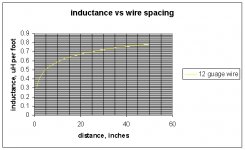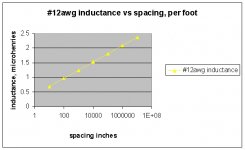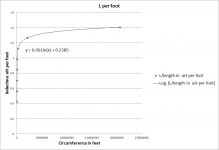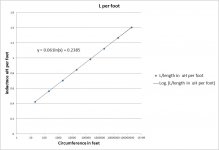Ah, yes. But you replied to John's statement saying "Yep - if its not about achieving the ultimate quality then where's the fun?" So it seemed you were simpatico with John's meaning of the word.
Interpretation of language is based on most probable meanings. It felt like JC was talking about subjective satisfaction when he mentioned quality, though of course I can't be sure. 'Fun' likewise is purely subjective. John's not been a numbers guy for as long as I've followed this thread so that context gets thrown into the language decoding process too.
There's more to my original point than ocular visibility, I'm talking of aural "invisibility", the disappearing speakers trick. Most systems, most of the time, it's easy to pinpoint that the sound is emerging from the drivers, especially the tweeter. If it appears to be "imaging" well, then just move somewhat off centre, closer to one of the speaker assemblies, and any illusion of sound occurring in an overall space evaporates. Curtain or no curtain ...Just put everything behind a curtain.
se
Getting to the point of total invisibility is the name of the game, for me ...
Frank
Too cute? Or... natural fact?
None of the above. Just another excuse for why you couldn't hear what you THOUGHT you could hear as long as you were peeking.
John, you're fortunate enough to live a stone's throw from Berkeley Bowl (corner of Adeleine and Ashby), which may be the best produce market in the world. The place is packed with artisinally grown vegetables and fruit, an absolute delight. Half the price of Whole Foods, as well.
JC -- Just a curious thought ---DBT can be randomized excessively. Randomizing tests reminds me of generating noise and the average of noise is zero.
Too cute? Or... natural fact?
It´s not so much the randomiziation, but too many confounding elements.
So the most important point in controlled testing (if you are interested in the question if something is audible - at least for one listener in the world) is to train under the specific test conditions and to use positive controls to see what the participants are doing.
Signal detection theory for example models all confounders in an internal noise level (assumed to follow a gaussian distribution) that is superimposed to the underlying hearing process.
For the record, I will ALWAYS 'peek', in order to keep track of what I am listening to, as the music always changes.
We KNOW that double-blind testing makes: Lousy stuff sound OK, and OK stuff sound OK. Therefore, it doesn't give us the resolution to separate the two.
I knew this more than 30 years ago, and I find success in sticking to the process of living with an audio component over a significant period of time, and assessing its virtues or its demerits, is the best way to evaluate a quality component.
I am now doing this with a Sony tuner, only slightly modified. I have found myself listening to it, less and less, remembering my Marantz 10 even more fondly. This tells me something is wrong. Reasonably soon, I hope to find a technician that I can get to modify it, to see if the problem is in either the analog section or its the digital processing that needs changing. My hope is that, like so much digital equipment, improving the analog section can make this component more 'listenable'.
I had the same problem in 1969, with the Marantz 14, power amp.
I first had tubes driving my K-horn,(1967) and it was OK, then I put my own, very first, comp diff design in, with some success (1968).
However, I was initially 'knocked out' by the specs and even my personal measurement of the Marantz 14, (IM distortion with level, and stability with cap load), such that I bought one to use. However, OVER TIME, I found that I was listening less and less to my hi fi. (Just like what is NOW happening with the Sony tuner) and I went back using my own design, which measured no better, and had less max power, and all was OK again.
IF I can't fix the Sony Tuner, I will be FORCED to fix the Marantz 10, at an even greater cost of time and money, (and convenience as well), in order to get back the LONG TERM satisfaction back into listening to FM radio.
This is how I evaluate audio progress (or not) and I am going to stick to it.
We KNOW that double-blind testing makes: Lousy stuff sound OK, and OK stuff sound OK. Therefore, it doesn't give us the resolution to separate the two.
I knew this more than 30 years ago, and I find success in sticking to the process of living with an audio component over a significant period of time, and assessing its virtues or its demerits, is the best way to evaluate a quality component.
I am now doing this with a Sony tuner, only slightly modified. I have found myself listening to it, less and less, remembering my Marantz 10 even more fondly. This tells me something is wrong. Reasonably soon, I hope to find a technician that I can get to modify it, to see if the problem is in either the analog section or its the digital processing that needs changing. My hope is that, like so much digital equipment, improving the analog section can make this component more 'listenable'.
I had the same problem in 1969, with the Marantz 14, power amp.
I first had tubes driving my K-horn,(1967) and it was OK, then I put my own, very first, comp diff design in, with some success (1968).
However, I was initially 'knocked out' by the specs and even my personal measurement of the Marantz 14, (IM distortion with level, and stability with cap load), such that I bought one to use. However, OVER TIME, I found that I was listening less and less to my hi fi. (Just like what is NOW happening with the Sony tuner) and I went back using my own design, which measured no better, and had less max power, and all was OK again.
IF I can't fix the Sony Tuner, I will be FORCED to fix the Marantz 10, at an even greater cost of time and money, (and convenience as well), in order to get back the LONG TERM satisfaction back into listening to FM radio.
This is how I evaluate audio progress (or not) and I am going to stick to it.
Let me add: and if you can't calculate it properly it does not mean that it is infinity.
Try doing this: Using amperes law, setup the integral from the wire surface, to infinity. Set it up to integrate the total stored energy in the magnetic flux for a unit length of wire. (inductance is the relationship between stored energy and the current driving the storage..)
The Flux at any radius R is proportional to 1/R.
The total (differential) volume of space containing that 1/R flux is proportional to R. (This is consistent with integration 360 degrees around the wire).
What must be remembered is: it is not possible to have a current without a return path. It is not possible to calculate the external inductance of any wire without knowing that path. Online calculators which do not ask you for the return path are giving you an estimate based on some unknown assumption of the author.
Thinking of an infinite inductance is of no use, it does not happen. Also, think about the realistic numbers that result even if you integrate out half a light year..graph attached..
Sorry, it seems the extension cord I measured is not some SJ cord. I asked around as to the origins of the cable I was testing since it was substantially different from what was predicted. It seems an Israeli group thought Monster would be interested in selling healthy power cords. Its a sample of a Low EMF (radiated magnetic field) cable sent to us as a sample. Its an interesting patented construction it turns out. The business model did not work so we passed on it. That cable might make for a better speaker cable (also a market that is not big for Monster anymore).
I'll try to find a normal SJ cord to test. At least we are discussing real numbers not speculation.
Interesting. I was beginning to worry about that..
You can't. There is no return path..The question of inductance of a straight wire in free space gets more interesting when you ask how to dump energy into it if it has infinite inductance. . .
Thanks jn, that's interesting. And how did you find taking feedback from the speaker - make any difference to the sound? I have considered doing this for quite some time, but more recently found its not the lowest-hanging fruit of getting decent sound
No. (edit: sorry, didn't answer...I heard no diff). But then again, I do not have a high quality system to try it on, just pro cabs designed for raw spl per unit weight, requiring heavy EQ use.
jn
ps. 1 e+8 inches is 1578 miles...
Attachments
Last edited:
Hint: think of a peace of wire of length L and diameter D, as a part of a circle in diameter approaching infinity.
Ah, it just dawned on me what model you are using...You have assumed a return path and an approximation equation.
Still, it is no problem really..as you can see, even at a planetary scale, the inductance per unit foot doesn't go over 3 microhenries per foot.
I found the issue when I was trying to calculate the inductance of an arbitrary current cross section, a solver using several thousand wires to carry current.(the earlier image was an output of the solver..) In trying to determine the outer physical bound where the calculation would asymptotically approach a final value, I found it would never settle down if there were no return conductors.
A co-worker provided the analytical solution and validated my understandings...there must be a return current path in order to calculate the inductance per foot.
Otherwise, it is important to know the assumptions used to arrive at a single wire L value..
BTW, the terman equation consists of 3 parts.
1. The inductive component related to the wire diameter and the spacing.
2. A correction based on the aspect ratio of the wire (spacing to width ratio, you were using 1 for this.)
3. A nomograph based skin component.
jn
None of the above. Just another excuse for why you couldn't hear what you THOUGHT you could hear as long as you were peeking.
Im not sure to whom "you" refers to. I have stayed pretty much out of saying what I hear or dont hear and always put the listening tests or the listening experience in the hands of others. Reviewers do what JC does... they live with the product for as long as practicle with a room and system they are long familier with before qualities and characteristics can be described. DBX and the way JC nd other evaluate both seem to be valid approaches but one is more sensitive than another, it seems. Or, the DBT applied to hearing differences is the most sensitive. Doesnt really matter to me. I use what the majority of people (fools perhaps) say they hear and often - but not always like with R.Grey products - can find some correlation. Even it it does or doesnt hold up to DBT isnt a big concern because my fun is in learning new things and in the process of test and measurment and listening, i sometimes learn more. Compared to some here, this sounds simplistic to extream, I am sure. Take your best shot.
Thx, RNM
Edit: let me explain.
Start from the closed loop of a wire of the length L. Then increase loops' length twice, getting inductance of it's half in this loop. And so on. The close the diameter of the loop approaches infinity, the close the loop's part in interest approaches the straight line.
I just used an online calculator for the loop...
Inductance of a Wire Loop
Here are two graphs of the exact same data. I ran the radius in meters, and took the inductance calculated, divided it by the length of wire required to form the loop.
I believe our disconnect to be how the data is presented.
You are speaking about the linear graph representation. It appears to asymptotically approach 1.4 plus micro-henries per foot.
By converting to log x axis, a clear picture shows up.
j
I speak of the second graph.
ps. Hadta reupload the graphs, I messed up the graph scaling in x.
Attachments
Last edited:
Ah, it just dawned on me what model you are using...You have assumed a return path and an approximation equation.
Still, it is no problem really..as you can see, even at a planetary scale, the inductance per unit foot doesn't go over 3 microhenries per foot.
I found the issue when I was trying to calculate the inductance of an arbitrary current cross section, a solver using several thousand wires to carry current.(the earlier image was an output of the solver..) In trying to determine the outer physical bound where the calculation would asymptotically approach a final value, I found it would never settle down if there were no return conductors.
A co-worker provided the analytical solution and validated my understandings...there must be a return current path in order to calculate the inductance per foot.
Otherwise, it is important to know the assumptions used to arrive at a single wire L value..
BTW, the terman equation consists of 3 parts.
1. The inductive component related to the wire diameter and the spacing.
2. A correction based on the aspect ratio of the wire (spacing to width ratio, you were using 1 for this.)
3. A nomograph based skin component.
jn
Your explainations are wonderful and so clearly stated. esp. the practical aspects.
Last edited:
I have a serious question: Does anybody actually have fun with ultimate quality, anymore? We used to, but there seems to be a concerted effort to burn out the enthusiasm.
I do, while I know of some people who were enthusiastic about audio quality and drifted away from it.
That is, I'm enthusiastic about the audio quality of my setup, but I cannot afford ultimate quality.
No. Not completely... the time line was the Tice clock came first and was measured.
-RNM
I kept my promise and read the first patent, since no prior art on power line filtering/conditioning was cited I guess there's not much to discuss. The date was 1993 not 1963, there was not even a small study on what was known about line noise filtering? It certainly was known when I started 20yr. before.
The 3Henry inductor patent tried to claim improvement, but that read like nonsense.
… Reviewers do what JC does... they live with the product for as long as practicle with a room and system they are long familier with before qualities and characteristics can be described. …
It's also my experience; I found out that I can seriously evaluate any piece of audio gear only on my own system and over at least few days.
When I listen to an audio system other than my own, in most cases the differences in the overall sound are enormous, overwhelming and masking the differences when a piece of gear (amp, player, speakers, cable, whatever) is switched. Often I can note a difference in the sound when a piece of gear is switched, but I cannot say if there was improvement or degradation in the sound quality.
On my own system, at times, when a piece of gear is switched, at first the sound is more appealing. After a longer period of listening, usually few days, some faults and shortcomings start to be noticed.
This is why I find all DBT (the way they are usually done) useless and meaningless.
I assume that the demand for DBT arose from the intention to neutralize imagined, or psychological audible differences, especially to neutralize a possible placebo effect.
In my own case, my experience showed me clearly and without any doubt that when it comes to the sound of my audio setup, I hear what's actually there, without any placebo effect. (Most probably some people will question my last statement, however I don't care at all the way others relate to any statement of mine).
Anyhow, even if I'm given to a placebo effect concerning the sound of my audio setup, that placebo effect is constant. When after few days of listening a piece of gear sounds to me in a certain way, it will sound the same way after weeks, months and years. Since my audio setup is there for the sole purpose of giving me pleasure in listening to reproduced music, even if I was given to a placebo effect, as long as that presumed placebo effect is constant (and therefore the pleasure I derive from listening to reproduced music is constant) – it doesn't matter to me at all whether there is a placebo effect, or not. I don't care at all what is it that gives me pleasure in listening to reproduced music, be it placebo effect or anything else. All I care about is the pleasure I get from listening to reproduced music.
Hence, with a placebo effect or without it, the only reasonable way for me to choose the pieces of gear to my sound setup is by my own listening evaluation. Any other way will undermine the purpose for which I have an audios setup to begin with.
This video documentary was about Monterey Market, a store that I rarely visit, yet I go by and even park next to their lot several times a week. Why I don't visit this market normally is because I am a 'meat and potatoes' kind of guy, and I shop at the butcher shop across the street, instead.
I thought potatoes were a vegetable or at least the butcher does not carry them. You can have lots of fun with potatoes. My daughter and I spent last week sampling local (SF) restaurants to see which ones deserve her talents, home cooking is still one of the hobbies that one can affordably seek the ultimate and have fun. Next time your bombing around with Jack in his Bentley tap him for dinner at Saison or Benu I never though you could pay 5X Chez Pannise prices on the left coast, at more places than The French Laundry.
Last edited:
There's more to my original point than ocular visibility, I'm talking of aural "invisibility", the disappearing speakers trick. Most systems, most of the time, it's easy to pinpoint that the sound is emerging from the drivers, especially the tweeter. If it appears to be "imaging" well, then just move somewhat off centre, closer to one of the speaker assemblies, and any illusion of sound occurring in an overall space evaporates. Curtain or no curtain ...
Not necessary. I don't hear this effect with line arrays. Well, to certain degree, of course. "Sweet spot" is almost everywhere in the room.
None of the above. Just another excuse for why you couldn't hear what you THOUGHT you could hear as long as you were peeking.
John, you're fortunate enough to live a stone's throw from Berkeley Bowl (corner of Adeleine and Ashby), which may be the best produce market in the world. The place is packed with artisinally grown vegetables and fruit, an absolute delight. Half the price of Whole Foods, as well.
They have 2 shops in Berkeley now. Assortment is much wider than in Whole Foods, but I don't see twice lower prices.
Of course it is frightfully listener-position-dependent, but if you have ever heard VMax in a relatively dead room you will learn how easily fooled one's perception of acoustical sources is. I used to do a demo in which I had real speakers on the sides of the listener. I'd play 5 channel material, and when the listener got accustomed to it would withdraw the side speakers. Jaws dropped, consistently.
You are speaking about the linear graph representation. It appears to asymptotically approach 1.4 plus micro-henries per foot.
Yes. It's how I got 120 micro henries, I made a mistake multiplying by 4 inductance of 2 wires in series, in close proximity, like in case of bifillar winding. However I was wrong, since currents in wires flow in opposite directions.
Of course it is frightfully listener-position-dependent, but if you have ever heard VMax in a relatively dead room you will learn how easily fooled one's perception of acoustical sources is. I used to do a demo in which I had real speakers on the sides of the listener. I'd play 5 channel material, and when the listener got accustomed to it would withdraw the side speakers. Jaws dropped, consistently.
I did the trick when working with philharmonic jazz band: I inserted modified Roland Flanger guitar pedal in the left master channel. It was used as a line delay, without summing/feedback. During drummer's solo I was switching it on. People were rotating their heads all around! Once after concert local audio engineers brought vodka trying to get me drunk to reveal the secret, how I did the effect so drums were flying not only horizontally, but also vertically! I honestly did not expect that "Vertical" effect.
- Status
- Not open for further replies.
- Home
- Member Areas
- The Lounge
- John Curl's Blowtorch preamplifier part II



